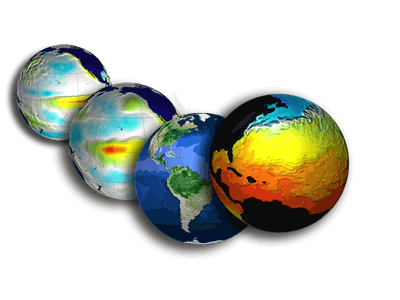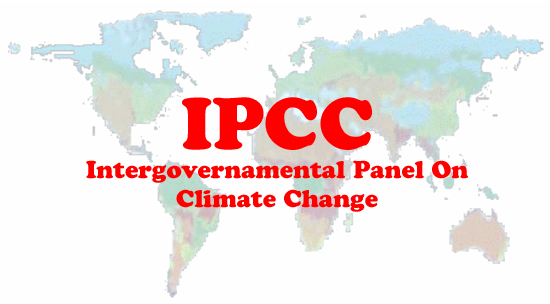Global Climate


Impact of climate change on human
It is now widely accepted that climate change is occurring as a result of the accumulation of greenhouse gases in the atmosphere arising from the combustion of fossil fuels. Climate change may affect health through a range of pathways, for example as a result of increased frequency and intensity of heat waves, reduction in cold related deaths, increased floods and droughts, changes in the distribution of vector-borne diseases and effects on the risk of disasters and malnutrition. The overall balance of effects on health is likely to be negative and populations in low-income countries are likely to be particularly vulnerable to the adverse effects. The experience of the 2003 heat wave in Europe shows that high-income countries may also be adversely affected. Adaptation to climate change requires public health strategies and improved surveillance. Mitigation of
climate change by reducing the use of fossil fuels and increasing a
number of uses of the renewable energy technologies should improve
health in the near-term by reducing exposure to air pollution.
The World Health Organisation estimates that the warming and
precipitation trends due to anthropogenic climate change of the past
30 years already claim over 150,000 lives annually. Many prevalent human
diseases are linked to climate fluctuations, from cardiovascular mortality and
respiratory illnesses due to heatwaves, to altered transmission of infectious diseases and malnutrition from crop failures. Uncertainty remains in attributing the expansion or resurgence of diseases to climate change, owing to lack of long-term, high-quality data sets as well as the large influence of socio-economic factors and changes in immunity and drug resistance. Here we review the growing evidence that climate–health relationships pose increasing health risks under future projections of climate change and that the warming trend over recent decades has already contributed to increased morbidity and mortality in many regions of the world. Potentially vulnerable regions include the temperate latitudes, which are projected to warm disproportionately, the regions around the Pacific and Indian oceans that are currently subjected to large rainfall variability due to the El Niño/Southern Oscillation sub-Saharan Africa and sprawling cities where the urban heat island effect could intensify extreme climatic events.
The impacts of climate change on the economy
Climate change will have an impact on the economic well-being. Since temperature and precipitation are direct inputs in agricultural production, many believe the largest effects will be in this sector. Previous research on climate change concerning the sign and magnitude of its effect on the value of worldwide agricultural land is inconclusive.
Impacts of climate change on the environment
Global climate change has already had observable effects on the environment. Glaciers have shrunk, ice on rivers and lakes is breaking up earlier, plant and animal ranges have shifted and trees are flowering sooner.
Effects that scientists had predicted in the past would result from global climate change are now occurring: loss of sea ice, accelerated sea level rise and longer, more intense heat waves.
Scientists have high confidence that global temperatures will continue to rise for decades to come, largely due to greenhouse gasses produced by human activities. The Intergovernmental Panel on Climate Change (IPCC), which includes more than 1,300 scientists from the United States and other countries, forecasts a temperature rise of 2.5 to 10 degrees Fahrenheit over the next century.
According to the IPCC, the extent of climate change effects on individual regions will vary over time and with the ability of different societal and environmental systems to mitigate or adapt to change.
The IPCC predicts that increases in global mean temperature of less than 1.8 to 5.4 degrees Fahrenheit (1 to 3 degrees Celsius) above 1990 levels will produce beneficial impacts in some regions and harmful ones in others. Net annual costs will increase over time as global temperatures increase.
"Taken as a whole," the IPCC states, "the range of published evidence indicates that the net damage costs of climate change are likely to be significant and to increase over time."
Below are some of the regional impacts of global change forecast by the IPCC:
-
North America: Decreasing snowpack in the western mountains; 5-20 percent increase in yields of rain-fed agriculture in some regions; increased frequency, intensity and duration of heat waves in cities that currently experience them.
-
Latin America: Gradual replacement of tropical forest by savannah in eastern Amazonia; risk of significant biodiversity loss through species extinction in many tropical areas; significant changes in water availability for human consumption, agriculture and energy generation.
-
Europe: Increased risk of inland flash floods; more frequent coastal flooding and increased erosion from storms and sea level rise; glacial retreat in mountainous areas; reduced snow cover and winter tourism; extensive species losses; reductions of crop productivity in southern Europe.
-
Africa: By 2020, between 75 and 250 million people are projected to be exposed to increased water stress; yields from rain-fed agriculture could be reduced by up to 50 percent in some regions by 2020; agricultural production, including access to food, may be severely compromised.
-
Asia: Freshwater availability projected to decrease in Central, South, East and Southeast Asia by the 2050s; coastal areas will be at risk due to increased flooding; death rate from disease associated with floods and droughts expected to rise in some regions.
Impacts of Climate Change


